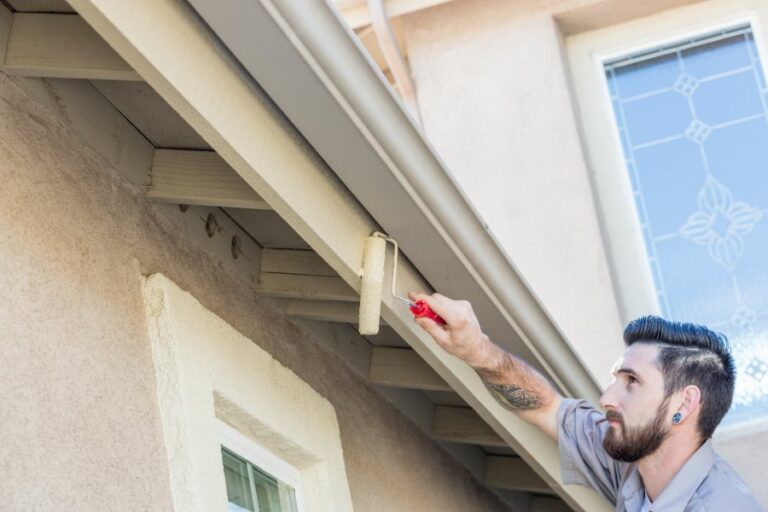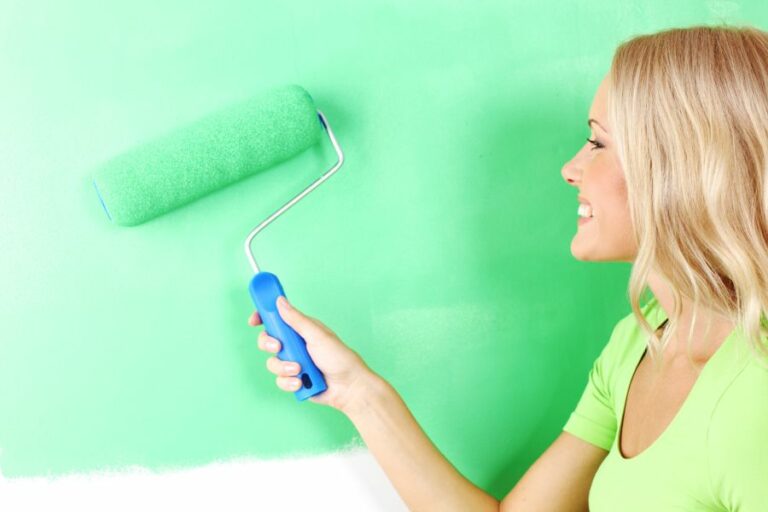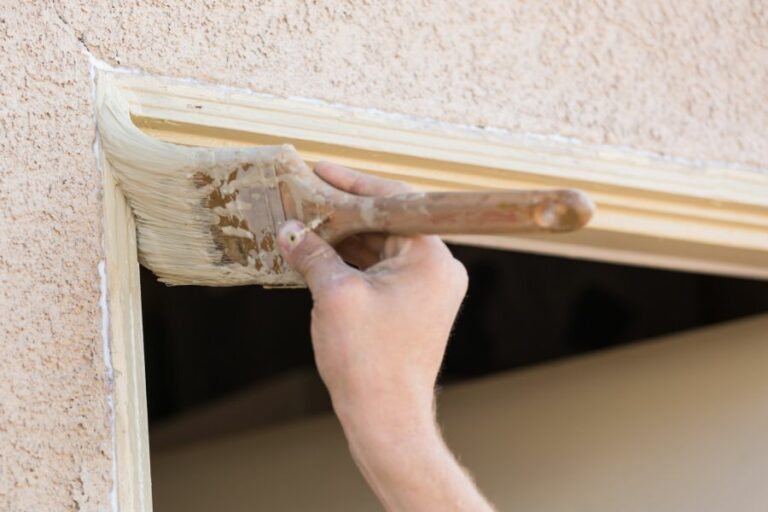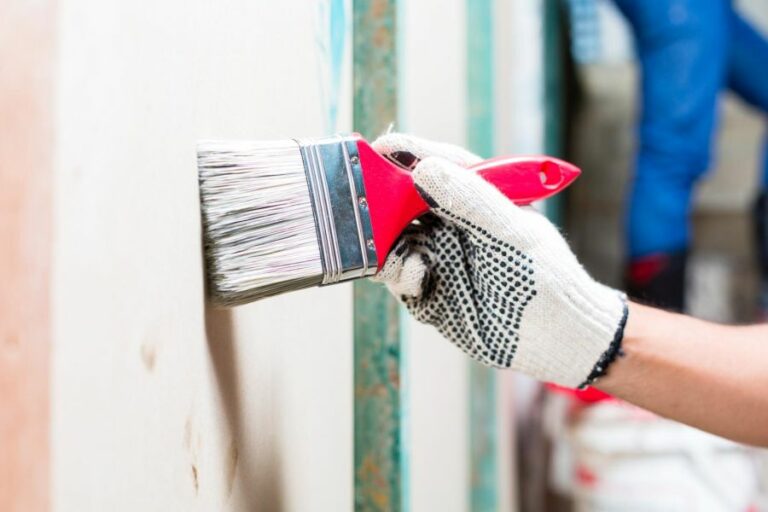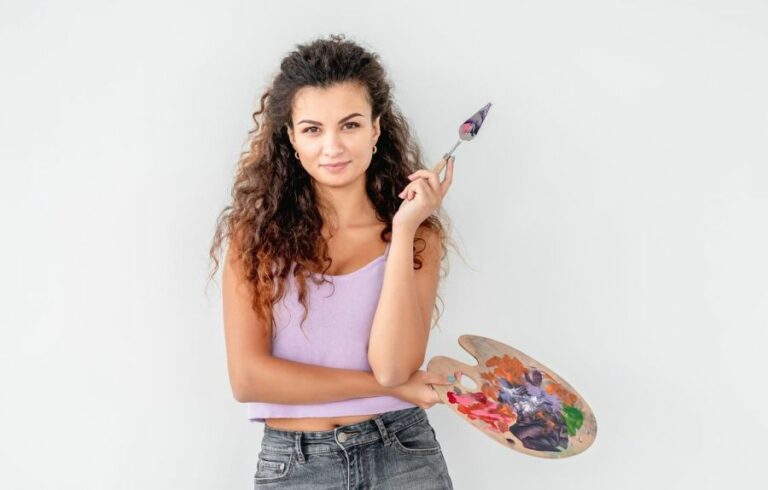Outdoor Clear Coat Spray Paint, 25 Things You Should Know
Are you looking for a way to keep your outdoor furniture, decorations, and projects looking pristine throughout the year? Look no further because we have the perfect solution for you! Outdoor clear coat spray paint is a must-have product to ensure that your items remain durable and visually appealing regardless of the climate.
Outdoor clear coat spray paint:
Outdoor clear coat spray paint is a specialized protective coating designed for outdoor surfaces. Made from acrylic or polyurethane, it provides a transparent, weather-resistant, and UV-protective finish on wood, metal, and other materials. It enhances surface appearance while protecting from sun, rain, and chemicals. Common applications include outdoor furniture and decor. For best results, prepare the surface, choose a high-quality outdoor clear coat, and follow proper application techniques.

Want to give your outdoor items a new lease on life? Discover the wonders of outdoor clear coat spray paint! Learn about its benefits, best applications, and expert tips. Read on, and make your outdoor surfaces shine like never before with a durable, protective finish.
Contents
- 1 Exterior Clear Coat Spray Paint for Outdoor Surfaces
- 2 What is the Durability and Lifespan of a Spray-on Clear Coat?
- 3 What is the Optimal Clear Coat to Use with Spray Paint?
- 4 What is the Method for Sealing Outdoor Spray Paint?
- 5 Is it Possible to Apply a Clear Coat Over Any Paint?
- 6 What is a High-Quality Clear Coat Spray Paint?
Exterior Clear Coat Spray Paint for Outdoor Surfaces
Keeping your outdoor furniture, metals, and wood surfaces looking great can be a challenge, especially with the sun, rain, and other elements constantly working against you. Fortunately, outdoor clear coat spray paint offers the perfect solution to protect and extend the life of your belongings.
• What is Outdoor Clear Coat Spray Paint?
Outdoor clear coat spray paint is a specialized paint product designed to provide a durable, transparent layer of protection over outdoor surfaces.
It is typically made from acrylic or polyurethane, which offers protection from UV rays, water, and chemicals. Unlike traditional paints, clear coat spray paint is formulated to leave a glossy, transparent finish that enhances the surface’s appearance while offering long-lasting protection.
• Benefits of using Clear Coat Spray Paint Outdoors
– UV Protection
One of the primary benefits of using outdoor clear coat spray paint is protection from harsh UV rays. Over time, sun exposure can cause painted surfaces to fade, crack, and peel.
Clear coat spray paint contains UV inhibitors which can help prevent this damage, maintaining the original color and appearance much longer.
Bonus Tip: Check out this link from the U.S. Department of Energy to learn more about the importance of UV protection.
– Weather Resistance
Outdoor clear coat spray paint provides protection against moisture, such as rain and humidity. This can help prevent rust on metal surfaces and protect the wood from warping, swelling, or rotting.
– Chemical Resistance
Clear coat spray paint is formulated to withstand a variety of chemicals, including acid rain, salt spray, and pollution. This feature can help maintain the overall appearance of your outdoor surfaces and prevent premature aging.
– Enhanced Appearance
When properly applied, outdoor clear coat spray paint gives surfaces a glossy, professional finish. This can bring out the colors and textures of the underlying surface and keep it looking fresh and new for years to come.
• How to Apply Outdoor Clear Coat Spray Paint
– Step 1: Prepare the Surface
To get the best results from your clear coat spray paint application, the surface must be properly prepared. This means ensuring it is clean, dry, and free of any loose paint or debris. Use a soft brush or cloth to clean the surface thoroughly and allow it to dry completely before proceeding.
– Step 2: Choose the Right Clear Coat Spray Paint
Not all clear coat spray paints are created equal, so it’s essential to choose one specifically designed for outdoor use. Look for a product that offers UV protection, weather resistance, and a durable finish. We recommend Krylon UV-Resistant Clear Coating or Rust-Oleum Painter’s Touch 2X Ultra Cover Clear.
– Step 3: Apply the Clear Coat
Follow the manufacturer’s instructions for how to shake and apply the clear coat spray paint. Typically, it’s best to apply multiple thin coats, allowing each coat to dry before applying the next one. This ensures a smoother, more even finish that will better protect your surface.
– Step 4: Allow the Clear Coat to Dry
Once you’ve applied the final coat of clear coat spray paint, allow the surface to dry completely before using or touching it. The drying time will vary depending on the product and environmental conditions, so be sure to consult the manufacturer’s instructions.
• Additional Tips for Success
- Always test the clear coat spray paint on a small, inconspicuous area before applying it to the entire surface. This will help you determine the compatibility of the clear coat with your surface.
- Apply the clear coat spray paint on a calm, dry day to ensure the best possible adhesion and finish.
- Hold the spray can at an appropriate distance from the surface, typically 10-12 inches, to achieve a more even and consistent layer of clear coat.
- If you’re applying a clear coat over a painted surface, make sure the underlying paint is fully cured before applying the clear coat. This can help prevent bubbling, cracking, or uneven coverage.
• Conclusion
Outdoor clear coat spray paint is an essential tool for maintaining the appearance and durability of your outdoor surfaces.
It’s a relatively simple and cost-effective solution to protect your belongings from UV rays, harsh weather, and chemicals, ultimately prolonging their life and saving you money in the long run.
Be sure to follow the product instructions, application tips, and recommendations outlined in this guide to achieve the best possible results with your clear coat spray paint project.
What is the Durability and Lifespan of a Spray-on Clear Coat?
• Introduction to Clear Coat
A clear coat is a transparent layer of paint applied over the base coat of color paint on a vehicle, providing additional protection and enhancing the depth and shine of the paint job.
The clear coat also serves as a barrier against various environmental factors such as ultraviolet (UV) radiation, acid rain, bird droppings, and chemicals from petroleum products.
The latest trends involve using a spray-on clear coat, which is particularly popular among DIY enthusiasts and professionals for its ease of application and reliability. This type of clear coat comes in a variety of formulations, including urethane, acrylic, and polyester.
As with any other automotive product, many vehicle owners often wonder how long a spray-on clear coat will last.
• Factors Affecting the Lifespan of a Spray-on Clear Coat
1. Quality of the Clear Coat
One key factor in determining the lifespan of a spray-on clear coat is the quality of the product. High-quality clear coats offer better protection and longevity compared to cheaper alternatives. A premium quality clear coat is likely to last anywhere between 5 to 10 years, depending on various other factors.
2. Proper Application
The proper application of the spray-on clear coat is crucial to its longevity. If the clear coat is not applied correctly, its durability may be compromised, leading to a shorter lifespan. This includes ensuring that the surface is well-prepared, clean, and free from any contaminants before the application.
The clear coat should also be applied evenly and consistently, following the manufacturer’s instructions.
3. Environmental Factors
Environmental factors such as sunlight, temperature, humidity, and pollution can play a significant role in determining the lifespan of a spray-on clear coat. For example, high levels of UV radiation can cause the clear coat to yellow, fade, or become chalky over time.
Similarly, exposure to harsh chemicals or salt can cause the clear coat to lose its protective abilities, allowing the paint to become damaged.
4. Maintenance and Care
Appropriate maintenance and care can significantly impact how long a spray-on clear coat lasts. Regular washing, waxing, and polishing can help maintain the clear coat’s protective abilities and overall appearance.
It is also essential to promptly address any chips or scratches in the clear coat to prevent further damage.
5. Driving and Parking Habits
Finally, your driving and parking habits can also affect the lifespan of the clear coat. Frequent driving or parking in harsh conditions, including direct sunlight, high temperatures, or constant exposure to environmental pollutants, can shorten the clear coat’s lifespan.
• Ways to Extend the Lifespan of Your Spray-On Clear Coat
1. Choose a High-Quality Clear Coat
As mentioned earlier, the quality of the clear coat is essential in determining its lifespan. Be sure to choose a high-quality product that has been tested and proven to provide excellent protection and durability.
2. Follow Proper Application Techniques
Follow the manufacturer’s guidelines when applying the clear coat to ensure a consistent and durable finish. If you are not experienced in applying clear coats, it may be beneficial to consult an expert or a professional to avoid application errors that could compromise the clear coat’s lifespan.
3. Protect Your Vehicle from Environmental Factors
Where possible, park your car in a covered area or use a car cover to protect it from sunlight, rain, and other environmental factors. Regularly washing and waxing your vehicle can help minimize the impact of these factors.
4. Perform Regular Maintenance
Keep your clear coat looking its best and lasting longer by performing regular maintenance. Use high-quality car wash and wax products, and do not forget to polish the surface occasionally to maintain its shine and protective properties.
• Conclusion
In conclusion, the lifespan of a spray-on clear coat varies depending on factors such as the product’s quality, application techniques, environmental factors, and maintenance habits. With proper care and attention, a high-quality spray-on clear coat can last anywhere between 5-10 years or more.
Maintaining and caring for your vehicle’s clear coat not only enhances its appearance but also protects the paintwork underneath. Therefore, it is crucial to choose a high-quality clear coat, follow the manufacturer’s application guidelines, and practice proper maintenance habits to prolong its lifespan.
Type | Lifespan |
|---|---|
Spray-On Clear Coat | 1-2 years (depending on environmental factors) |
What is the Optimal Clear Coat to Use with Spray Paint?
When it comes to DIY projects or adding a touch of creativity to your home, spray paint can be a real game-changer. However, to ensure long-lasting and vibrant colors, it’s crucial to apply the right clear coat. A top-notch clear coat can protect the paint from yellowing, chipping, and fading.
• Why Clear Coat Matters
Clear coats serve multiple purposes, from providing a layer of protection for the spray paint to offering a smooth, glossy finish. By choosing a suitable clear coat, you will not only improve the overall appearance of your project but also make it more resistant to scratches, peeling, and the effects of the elements.
• Types of Clear Coats: Know Your Options
Different projects might require different kinds of clear coats, so it’s essential to understand your options before making a decision. Here, we’ll discuss the three most common types of clear coats available for spray paint.
– Acrylic Lacquer
Acrylic lacquer is known for providing a high-gloss, durable finish that’s both resistant to chipping and easy to apply. It dries quickly, making it an excellent choice for projects that require a fast turnaround time.
Acrylic lacquer clear coats are often considered a top choice by professionals, as they provide a smooth and professional-looking appearance.
– Urethane
Urethane clear coats offer excellent resistance to chemicals, abrasions, and UV rays, making them an excellent choice for projects that need to withstand harsh conditions.
Urethane clear coats are usually thicker and more robust than other types of clear coats, which provides added durability for your work. However, they require a more extended drying time, so plan for that when selecting this type of clear coat.
– Alkyd Enamel
Alkyd enamel clear coats provide a glossy, durable finish with excellent adhesion, making them suitable for a wide variety of surfaces. They are less costly than acrylic or urethane clear coats but have longer drying times.
Alkyd enamel clear coats are a great choice when working on a budget but be prepared to wait for the coat to dry completely.
• How to Choose the Right Clear Coat: Key Factors to Consider
Before you decide on a specific, clear coat for your spray paint project, there are several factors to consider, such as the scope of the project, the type of surface, and the environment in which the project will be located. Here’s a breakdown of these critical factors.
– Project Size and Scope
If you’re working on a small project, such as painting a picture frame, an acrylic lacquer clear coat might be your best bet, as it dries quickly and offers excellent protection.
However, large and more detailed jobs, like car painting or outdoor furniture refinishing, may require a urethane or alkyd enamel clear coat to provide the necessary durability and protection.
– Surface Type
Consider the type of material you’ll be applying the spray paint and clear coat, as some clear coats work better on specific surfaces.
Urethane clear coats generally work well on metal surfaces, while acrylic lacquer is more suitable for wood and plastics. Be sure to check the compatibility of the clear coat with your project’s surface.
– Environmental Factors
If your project is exposed to the elements or harsh conditions, opt for a clear coat with UV protection and resistance to abrasions and chemicals. In such cases, a urethane clear coat may be the best option.
• Best Clear Coat Recommendations
Considering the factors mentioned above, we have picked some top-rated clear coats for spray paint based on their performance, durability, and finish quality.
– Rust-Oleum Painter’s Touch Multi-Purpose Clear Gloss
This versatile clear coat can be used on a wide range of surfaces, including wood, metal, and plastic. It dries quickly to a durable, glossy finish that’s resistant to chipping and fading.
This budget-friendly option can be the best choice for small projects or when working on a budget. Rust-Oleum’s official website provides more information on this product and other options.
– KBS Coatings DiamondFinish Clear Coat
Ideal for more substantial and outdoor projects, this urethane clear coat provides excellent UV, chemical, and abrasion resistance. It offers a high-gloss finish and can be applied to surfaces like metal, wood, fiberglass, and plastics.
KBS Coatings’ DiamondFinish is more expensive but is an excellent investment for projects requiring superior protection and durability. The KBS Coatings website provides detailed information on this product.
– Minwax Polycrylic Protective Finish
This water-based acrylic lacquer clear coat is an excellent option for wood surfaces, offering a smooth, glossy finish that’s both durable and resistant to yellowing. It can be applied to furniture, cabinets, and other wood projects.
It dries quickly, making it a perfect choice for projects that need to be completed quickly. You can find more information on this product on the Minwax website.
• In Conclusion
Finding the best clear coat for spray paint requires a thorough understanding of the project’s needs and the available options.
Factors like project size, surface type, and environmental resistance should be taken into consideration while keeping in mind that the goal is to achieve a glossy, durable, and professional-looking finish.
By carefully selecting the right clear coat, you can ensure that your spray paint project will stand the test of time and continue to look its best.
Rank | Product Name | Description |
|---|---|---|
1 | Krylon Clear Gloss Spray | A versatile and durable clear coat spray that provides protection for various surfaces. |
2 | Rust-Oleum Clear Coat | UV and weather-resistant formula ideal for outdoor and automotive use, adheres to most surfaces. |
3 | Montana Varnish Spray | Acrylic-based clear coat with matte, gloss, and semi-gloss finishes, works well on various surfaces. |
4 | Dupli-Color Clear Coat | Designed for automotive use with excellent adhesion to metal, chrome, and plastic surfaces. |
5 | Testors Clear Coat | High-quality clear coat spray perfect for hobby and model applications. |
What is the Method for Sealing Outdoor Spray Paint?
Painting and beautifying our outdoor spaces is a great way to add a personal touch to our gardens, patios, and backyards. But in order to ensure that our painted surfaces can withstand the test of time and weather, we need to know how to properly seal our outdoor spray paint.
• Preparing the Surface
Before sealing your spray paint, the surface you have painted must be properly prepared. If not, you risk the adhesion and durability of the sealant. Here is a simple process to follow:
– Step 1: Clean the Surface
Begin by thoroughly cleaning the surface you’ve painted. Remove any dirt, dust, or debris with a brush or cloth. For stubborn dirt, use a mixture of soap and water and a soft scrub brush, then rinse clean. Make sure the surface is completely dry before moving on to the next step.
– Step 2: Sand the Surface
To achieve a smooth surface and optimal adhesion of the sealant, sand any rough or uneven areas of your painted surface with fine-grit sandpaper (preferably 220 grit or higher). Be gentle, as you don’t want to remove the paint, just smooth out any imperfections.
After sanding, use a tack cloth or damp cloth to remove any dust left over from the sanding process.
• Choosing the Right Sealant
There are various types of clear sealants available, and choosing the right one is crucial for the best results. Here are the three most common types of sealants for sealing outdoor spray paint:
– Polyurethane Sealant
This sealant is a popular choice for its durability and ability to protect painted surfaces from UV rays, moisture, and chemicals. It comes in a variety of finishes, ranging from matte to high gloss.
Some polyurethane sealants are water-based, while others are oil-based. Water-based polyurethanes dry faster, have less odor and are easier to clean up. Oil-based polyurethanes have a stronger odor and longer drying time but often provide better protection and can be more durable.
I recommend using a water-based sealant for most outdoor painting projects since its easier to apply and clean.
– Acrylic Sealant
Acrylic sealants are another popular choice for sealing outdoor spray paint. They are water-resistant and provide excellent protection from the elements. They are usually available in spray or liquid form and are easy to apply.
Acrylic sealants are a good choice if you want to maintain the original color of the painted surface, as they will not turn yellow over time, as some polyurethane sealants can.
– Spar Urethane
Spar urethane is a durable sealant specifically designed for outdoor use. It is more flexible than polyurethane, which allows it to better withstand changes in temperature, humidity, and other weather conditions. This makes it especially suitable for wooden surfaces such as outdoor furniture and marine applications.
However, it’s worth mentioning that spar urethane may not provide the same level of UV protection as other sealants, so it may be necessary to apply an additional UV-resistant coating for extended outdoor exposure.
• Applying the Sealant
Now that your surface is prepared, and you have chosen the right sealant, it’s time to apply it. Follow these steps for a successful application:
– Step 1: Apply the Sealant
If using a liquid sealant, apply using a high-quality brush. If using a spray sealant, hold the can about 12-18 inches away from the surface, and use a steady, sweeping motion. Be sure to overlap each pass slightly to ensure proper coverage.
– Step 2: Allow to Dry
Follow the instructions on your chosen sealant for drying times. Some sealants require multiple coats for optimal protection, so be sure to reapply as necessary. Between coats, follow the manufacturer’s recommended drying times.
– Step 3: Final Inspection
Before exposing your newly sealed surface to the elements, inspect it for any bubbles, unevenness, or other errors in the sealant application. If necessary, lightly sand the imperfections and reapply a final coat of sealant.
• Caring for Your Sealed Surface
To keep your sealed outdoor spray paint looking its best, apply these care tips:
- Periodically clean the surface with a soft brush or cloth to remove dirt and debris.
- Avoid using abrasive cleaners or scrubbing too hard, as this can scratch or dull the surface of the sealant.
- Reapply the sealant as needed, following the manufacturer’s recommendations, to maintain its protective qualities.
• Conclusion
Sealing your outdoor spray paint is essential for preserving and protecting your painted surfaces. Through proper surface preparation, choosing the right sealant, and following the application steps, you can ensure that your outdoor painting projects will look great and last for years to come.
For further information on paint and sealants, consult the resources provided by the U.S. Environmental Protection Agency and healthcare facilities, which are extremely useful in understanding the impacts of various chemicals and odors.
Step | Description |
|---|---|
1 | Choose a clear and dry day for sealing the painted object. |
2 | Prepare the surface by cleaning it thoroughly and ensuring it’s free from dust, dirt, or grease. |
3 | Choose an appropriate sealant or clear coat suitable for use with outdoor spray paint. Examples include polyurethane, clear acrylic, or spar urethane. |
4 | Apply the sealant according to the manufacturer’s instructions. This usually involves spraying it on in thin, even coats, allowing it to dry between applications. |
5 | Allow the sealant to cure for the recommended time, typically 24 to 48 hours, before handling, moving, or exposing the painted object to the elements. |
Is it Possible to Apply a Clear Coat Over Any Paint?
The clear coat is a transparent protective layer often applied over paint finishes to protect them from the elements and everyday wear and tear. Many people wonder if they can spray clear coat over any paint, which is an important question to consider before undertaking a painting project.
• Understanding Clear Coats and Their Purpose
Clear coats, also known as clear or top coats, are a crucial component of the modern automotive paint system. They provide a glossy finish and enhance the depth and richness of the color beneath.
Additionally, clear coats protect the underlying paint from UV radiation, scratches, and other environmental factors.
Clear coats are typically composed of a transparent resin that hardens upon exposure to air or heat. Some clear coats may also contain UV inhibitors or other additives to enhance their protective properties.
• Types of Clear Coat Compatible Paints
There are several types of paints that can be used with a clear coat. Let’s examine some commonly used ones and their compatibility with clear coats.
– Acrylic Lacquer
Acrylic lacquer paint is a popular choice for automotive finishes due to its ease of application and ability to dry quickly. It is compatible with clear coat applications, and many professionals recommend applying a clear coat over acrylic lacquer to achieve a durable and long-lasting finish.
– Acrylic Enamel
Acrylic enamel paints are another common option for automotive and other industrial applications. These paints produce a glossy finish on their own and may not require a separate clear coat.
However, applying a clear coat over acrylic enamel paint can still add an extra layer of protection and enhance the appearance of the finish.
– Acrylic Urethane
Acrylic urethane paints are known for their durability and resistance to environmental factors. These paints often include a built-in clear coat that provides additional protection and gloss.
It is generally not necessary to apply a separate clear coat over acrylic urethane paints, but doing so may improve the finish’s resistance to damage.
– Water-Based Paints
Water-based paints, such as acrylic and latex, are compatible with clear coats; however, the application process might be more challenging. It is crucial to ensure that the water-based paint is fully dry before applying a clear coat, as moisture can cause issues with the clear coat adhering properly.
Furthermore, selecting a water-based clear coat is advisable to ensure compatibility with the underlying paint.
• Considering Surface Preparation
Regardless of the paint type, surface preparation plays a vital role in ensuring a successful clear coat application. Properly preparing the surface allows the clear coat to adhere and bond with the underlying paint, resulting in a durable and long-lasting finish. Here are some essential steps to follow:
- Clean the surface: Remove any dirt, dust, or other contaminants from the surface to ensure proper adhesion.
- Sand the surface: Lightly sand any glossy, rough, or uneven areas to create a uniform surface for the clear coat. A 400-600 grit sandpaper should be appropriate for this task.
- Clean again: After sanding, thoroughly clean the surface to remove any dust or debris that may have been generated during the sanding process.
- Tack cloth: Use a tack cloth to remove any remaining fine particulate before applying the clear coat.
• Application of Clear Coat
When applying clear coat, it is essential to follow the manufacturer’s instructions and recommendations. Some general tips for a successful application include:
- Use a high-quality, compatible clear coat that matches the underlying paint type.
- Maintain a controlled and dust-free environment to prevent contamination of the clear coat.
- Apply the clear coat in thin, even layers, allowing each coat to dry according to the manufacturer’s instructions.
- Use proper application equipment, such as spray guns or aerosol cans, to ensure even coverage and a smooth finish.
• Concluding Thoughts on Clear Coat Compatibility
In summary, clear coats can indeed be applied over many paint types, including acrylic lacquer, acrylic enamel, and water-based paints. However, it is crucial to consider factors such as surface preparation, proper application techniques, and selecting a compatible clear coat for the underlying paint.
By following these guidelines, a durable and long-lasting finish can be achieved with the added protection and enhanced appearance that a clear coat provides.
Type of Paint | Can you spray a clear coat over it? |
|---|---|
Acrylic | Yes |
Enamel | Yes |
Oil-based | Yes, but it needs to be fully cured |
Latex | Not recommended |
Water-based | Yes |
Chalk | Yes, but it may alter the appearance |
Metallic | Yes |
Pearlescent | Yes |
Textured | Not recommended, as it may change the texture |
What is a High-Quality Clear Coat Spray Paint?
When it comes to spray painting a project, one of the most important steps is applying a clear coat. A good clear coat not only protects the painted surface from damage but also enhances the appearance by adding the final touch of shine and smoothness.
• The Importance of a Quality Clear Coat
A good clear coat is essential in protecting the underlying paint from:
- Ultraviolet (UV) light: UV light can cause the paint to fade over time.
- Chemicals: From gasoline and brake fluid to harsh cleaning agents – many chemicals can cause damage to the paint.
- Abrasions and scratches: A clear coat provides a protective barrier to resist scratches and damage from abrasion.
- Oxidation: Without a quality clear coat, the painted surface could become dull and lose its luster.
Additionally, a good clear coat enhances the appearance of the underlying paint by leveling out the surface, allowing for a smoother and shinier finish.
• Types of Clear Coats
There are several types of spray paint clear coats available on the market, each with its pros and cons. Some of the most common types include:
– Acrylic Clear Coats
Acrylic clear coats are solvent-based and one of the most cost-effective options. They offer good protection and are relatively easy to apply. However, they may not provide as long-lasting protection compared to other clear coats.
– Urethane Clear Coats
Urethane clear coats are more durable than acrylic clear coats, offering better protection against UV light, chemicals, and scratches. They are also more resistant to yellowing over time. However, they can be more challenging to apply and often require a professional touch.
– Epoxy Clear Coats
Epoxy clear coats have excellent adhesion to metal surfaces, making them a popular choice for automotive projects. They offer great protection against corrosion and chemicals but have a lower resistance to UV light compared to urethane clear coats.
The application can be challenging, as epoxy clear coats have a short pot life, meaning they must be applied quickly after being mixed.
– Water-Based Clear Coats
Water-based clear coats are an environmentally friendly option as they release fewer volatile organic compounds (VOCs) during the application and drying process. They offer excellent protection and durability, but may take longer to dry compared to solvent-based clear coats.
• Selecting the Best Clear Coat
When choosing the right clear coat for your project, consider the following factors:
– Compatibility with the Base Paint
Always ensure that the clear coat is compatible with the type of paint you use. Incompatible clear coat and paint types could result in a poor-quality finish, with potential issues such as peeling or cracking.
– Application Method
Consider the method of application for the clear coat. Some clear coats are easier to apply using spray cans, while others require specialized equipment such as HVLP (high volume, low pressure) spray guns. Be sure to choose a clear coat that matches your skill level and available equipment.
– Drying Time
Different clear coats have varying drying times, ranging from a few hours to several days. Consider the drying time based on your project needs and the environment in which you will be applying the clear coat (temperature and humidity could impact drying time).
– Finish
Choose a clear coat based on the desired finish, whether gloss, semi-gloss or matte. Each type of clear coat offers a different level of shine and final appearance.
• Recommendations from Personal Experience
In my experience, urethane clear coats offer the best combination of durability, protection, and appearance when applied properly.
One product I highly recommend is the USC SprayMax 2K Glamour High Gloss Aerosol Clear. This clear coat is easy to apply and provides excellent UV, chemical, and scratch resistance.
For a water-based option, I recommend Valspar’s ValClear Automotive Waterborne Clear Coat. This clear coat offers excellent protection with lower VOC emissions, providing an environmentally friendly option.
When applying any clear coat, be sure to read and follow the manufacturer’s instructions carefully, paying close attention to proper surface preparation, application technique, and drying times.
• Further Resources
For more information on spray paint clear coats and their application, check out the following resources from Sherwin-Williams Automotive Finishes and the Automotive Refinish department of PPG Industries.
These industry leaders offer in-depth articles and educational materials to help you select and apply the best clear coat for your project.

